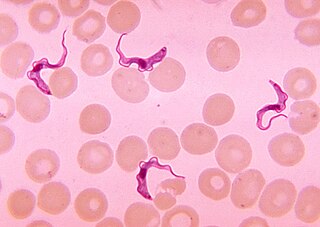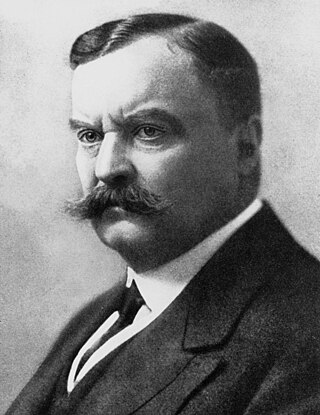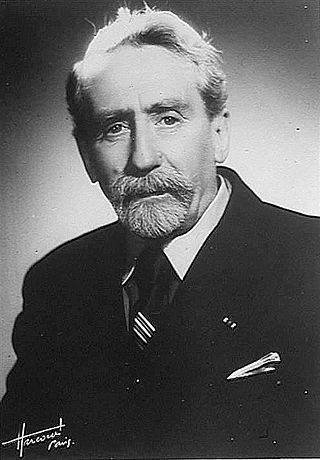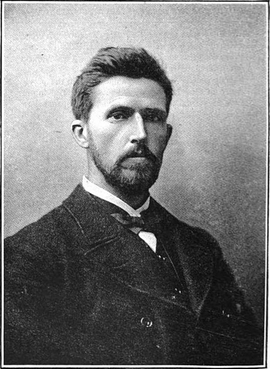
African trypanosomiasis, also known as African sleeping sickness or simply sleeping sickness, is an insect-borne parasitic infection of humans and other animals. It is caused by the species Trypanosoma brucei. Humans are infected by two types, Trypanosoma brucei gambiense (TbG) and Trypanosoma brucei rhodesiense (TbR). TbG causes over 92% of reported cases. Both are usually transmitted by the bite of an infected tsetse fly and are most common in rural areas.

Tsetse are large, biting flies that inhabit much of tropical Africa. Tsetse flies include all the species in the genus Glossina, which are placed in their own family, Glossinidae. The tsetse is an obligate parasite, which lives by feeding on the blood of vertebrate animals. Tsetse has been extensively studied because of their role in transmitting disease. They have a pronounced economic impact in sub-Saharan Africa as the biological vectors of trypanosomes, causing human and animal trypanosomiasis.

James Jude Orbinski, is a Canadian physician, humanitarian activist, author and leading scholar in global health. Orbinski was the 2016-17 Fulbright Visiting professor at the University of California, Irvine, and as of September 1, 2017, he is professor and inaugural director of the Dahdaleh Institute of Global Health Research at York University in Toronto, Ontario, Canada. He was previously the CIGI Chair in Global Health Governance at the Balsillie School of International Affairs and Wilfrid Laurier University (2012-2017), Chair of Global Health at the Dalla Lana School of Public Health (2010-2012) and full professor at the Faculty of Medicine, University of Toronto (2003-2012), where he was the founding Saul Rae Fellow at Massey College. Orbinski's current research interests focus on the health impacts of climate change, medical humanitarianism, intervention strategies around emerging and re-emerging infectious diseases, and global health governance.

Trypanosomiasis or trypanosomosis is the name of several diseases in vertebrates caused by parasitic protozoan trypanosomes of the genus Trypanosoma. In humans this includes African trypanosomiasis and Chagas disease. A number of other diseases occur in other animals.

Trypanosoma brucei is a species of parasitic kinetoplastid belonging to the genus Trypanosoma that is present in sub-Saharan Africa. Unlike other protozoan parasites that normally infect blood and tissue cells, it is exclusively extracellular and inhabits the blood plasma and body fluids. It causes deadly vector-borne diseases: African trypanosomiasis or sleeping sickness in humans, and animal trypanosomiasis or nagana in cattle and horses. It is a species complex grouped into three subspecies: T. b. brucei, T. b. gambiense and T. b. rhodesiense. The first is a parasite of non-human mammals and causes nagana, while the latter two are zoonotic infecting both humans and animals and cause African trypanosomiasis.

Major-General Sir David Bruce was a Scottish pathologist and microbiologist who made some of the key contributions in tropical medicine. In 1887, he discovered a bacterium, now called Brucella, that caused what was known as Malta fever. In 1894, he discovered a protozoan parasite, named Trypanosoma brucei, as the causative pathogen of nagana.
Relapsing fever is a vector-borne disease caused by infection with certain bacteria in the genus Borrelia, which is transmitted through the bites of lice or soft-bodied ticks.

The Drugs for Neglected Diseases initiative (DNDi) is a collaborative, patients' needs-driven, non-profit drug research and development (R&D) organization that is developing new treatments for neglected diseases, notably leishmaniasis, sleeping sickness, Chagas disease, malaria, filarial diseases, mycetoma, paediatric HIV, cryptococcal meningitis, hepatitis C, and dengue. DNDi's malaria activities were transferred to Medicines for Malaria Venture (MMV) in 2015.

Wayne Marvin Meyers was an American physician, microbiologist, chemist, humanitarian, and medical missionary. He pioneered new medical techniques, discovered new infectious agents, and trained countless researchers and scientists. Meyers was particularly well known for his work with Hansen's disease (Leprosy), Buruli ulcer, and filarial diseases.
Fexinidazole is a medication used to treat African trypanosomiasis caused by Trypanosoma brucei gambiense. It is effective against both first and second stage disease. Also a potential new treatment for Chagas disease, a neglected tropical disease that affects millions of people worldwide. It is taken by mouth.

Émile Roubaud was a French biologist and entomologist known for his work on paludism, yellow fever and sleeping sickness.
Naval Medical Research Unit Five (NAMRU-5) was a research laboratory of the US Navy which was founded as a field facility of Naval Medical Research Unit 3 in Addis Ababa Ethiopia with a collecting station in Gambella on December 30, 1965 under an agreement between the US and Ethiopian governments. In 1974 NAMRU-5 was established as its own command and was housed in the Ethiopian Health and Nutrition Research Institute. The mission of NAMRU-5 was to conduct research and development on infectious diseases of military importance in sub-Sahara Africa. Gambella became the focus of a major malaria control effort and studies on malaria immunology. Applied research focused on the general areas of insect repellents, insecticide resistance, insect attractants and louse control.

Frederick Stanley Arnot was a British missionary who did much to establish Christian missions in what are now Angola, Zambia and the Democratic Republic of the Congo (DRC).

The Congo-Balolo Mission (CBM) was a British Baptist missionary society that was active in the Belgian Congo, the present day Democratic Republic of the Congo, from 1889 to 1915. It was the predecessor of the Regions Beyond Missionary Union (RBMU), established in 1900, which today is called World Team.

Cuthbert Christy was an English medical doctor and zoologist who undertook extensive explorations of Central Africa during the first part of the 20th century. He was known for his work on sleeping sickness, and for the Christy Report on slavery in Liberia in the 1920s.
Arthur Lewis Piper was a medical missionary in the Belgian Congo, supported by the Detroit Epworth League. He worked for the Mission Conference of the Methodist Episcopal Church in the most remote mission station near Kapanga in the Belgian Congo. Piper helped the Lunda tribe battle malaria, sleeping sickness, and leprosy, among many other diseases.

Clinton Caldwell Boone was an African-American Baptist minister, physician, dentist, and medical missionary who served in the Congo Free State and Liberia. The son of Rev. Lemuel Washington Boone and Charlotte (Chavis) Boone of Hertford County, North Carolina, he played an important role in Africa as a missionary for the Lott Carey Foreign Mission Convention and the American Baptist Missionary Union, now American Baptist International Ministries.

Clement Clapton Chesterman OBE was an English writer, humanitarian and physician. He was a medical missionary for the Baptist Missionary Society that served in the Belgian Congo, more specifically Yakusu. He was responsible for the establishment of a hospital, community-based dispensaries and training centres of medical auxiliaries. Chesterman's network of health dispensaries employed preventive medicine using the new drug tryparsamide to combat the prevalent issue of sleeping sickness in the area. His implementation of mass chemotherapy was extremely successful in eliminating the disease. Such success led to his methods being widely adopted in Africa, making Chesterman a prominent contributor to the field of tropical medicine. In 1974 he was knighted by Queen Elizabeth.
Victor Kande Betu Kumeso is a Congolese physician who is an expert in African trypanosomiasis. He works at the Programme National de Lutte contre la Trypanosomiase Humaine Africaine at the University of Kinshasa.
The Sleeping Sickness Commission was a medical project established by the British Royal Society to investigate the outbreak of African sleeping sickness or African trypanosomiasis in Africa at the turn of the 20th century. The outbreak of the disease started in 1900 in Uganda, which was at the time a protectorate of the British Empire. The initial team in 1902 consisted of Aldo Castellani and George Carmichael Low, both from the London School of Hygiene and Tropical Medicine, and Cuthbert Christy, a medical officer on duty in Bombay, India. From 1903, David Bruce of the Royal Army Medical Corps and David Nunes Nabarro of the University College Hospital took over the leadership. The commission established that species of blood protozoan called Trypanosoma brucei, named after Bruce, was the causative parasite of sleeping sickness.















